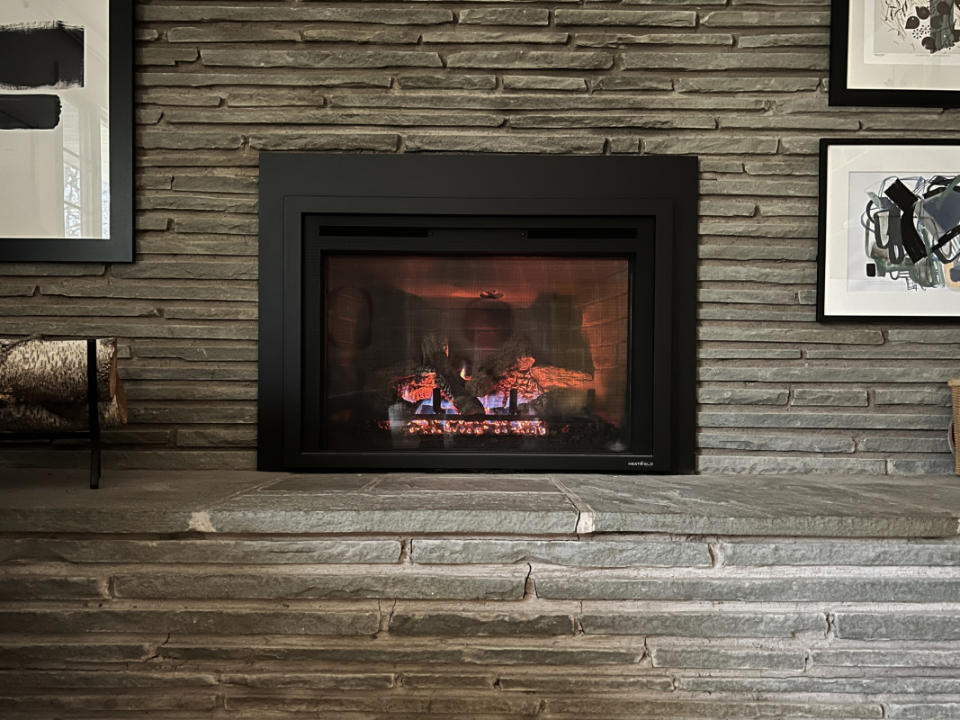How Much Does it Cost to Run Gas to a New Fireplace Insert?
When it comes to types of fuel, propane and natural gas are efficient sources of energy. Whether it's for an outdoor fireplace, a water heater, or converting an existing wood-burning fireplace to a new gas insert, you're going to need to connect the fuel source to the gas unit.
The gas line installation cost will depend on a few factors: the distance to be covered, the complexity of the installation, materials required, and local average labor cost. As it depends heavily on location, it's hard to predict the average price to run a new line to something like a gas fireplace insert, but there are a few things that you should think about.
Benefits of Switching to a Gas Fireplace
Convenience: One of the easiest heating options. Most types of gas fireplaces offer instant ignition at the touch of a remote control.
Cleanliness: Unlike wood fireplaces, gas-powered fireplaces produce no ash, soot, or debris, resulting in minimal cleanup and maintenance.
Energy Efficiency: Gas inserts are typically more energy efficient and have lower energy bills than traditional fireplaces, providing consistent heat with lower fuel consumption and stable operational costs.
Safety: A traditional wood-burning fireplace comes with the risk of sparks, flying embers, or creosote buildup causing a chimney fire. Gas fireplaces are a popular option because they pose fewer safety concerns. Just be sure to stay on top of scheduling an annual inspection with a professional to check for safety issues like signs of rust.
Hands-off: Either your utility company provides a natural gas line hook-up, or you'll make a call to be put on the schedule for your local gas provider to refill your propane tank. There are few aspects of maintenance to keep track of.
Clean: Direct-vent fireplaces are enclosed systems so no pollutants produced in the combustion process will enter your home making them an excellent option for air quality concerns.
Warm: While there are numerous types of fireplaces that run on gas or propane, they can consistently a larger square foot space than an electric fireplace.
Wide Variety: There's a type of gas fireplace for every price range. They come in various sizes and styles, as freestanding units or decorative inserts for your built-in fireplace. There will always be an expensive option, but there is a wide range so you can budget your upfront costs effectively.
Savings: Along with a range of affordable options, if you replace your wood-burning fireplace with certain types of gas fireplaces that meet environmental energy efficiency standards, you may qualify for a rebate or tax credit.

Emily Fazio
Is there an average cost per linear foot?
The average installation cost per linear foot depends on the complexity of the installation process as well as the material costs. Based on the national average cost of gas lines, homeowners can expect to pay between $20 to $30 per linear foot. However, this cost estimate is just a rough guideline, and actual costs may differ based on individual circumstances (location, accessibility, labor rates, price of materials) and specific project requirements. For an accurate local price range, consult with a licensed professional gas plumber to obtain accurate quotes tailored to your situation.
What labor costs can I expect?
The professional installation labor cost ranges from $50 to $150 per hour. Yes, that's a big difference. Complex installations will cost more. You may find that your geographic location and availability of a technician will be the biggest driving factor in the price of installation. This is because total labor expense will also be influenced by the time required for planning, trenching outdoor lines (if necessary), pipe installation, connection to the existing gas line, and conducting a gas line pressure test for safety and functionality.
Obviously, particularly challenging jobs may require extra labor at an additional cost. Some licensed plumbers charge a flat fee for the entire project instead of hourly rates. It's essential to obtain detailed quotes from a contractor with fireplace conversion experience.
It's also advisable to factor in landscaping costs because installing outdoor lines can leave a mess and your property's aesthetic appeal.
Related: Is an Electric Fireplace More Efficient Than a Gas Fireplace?
Do I need a permit to run a gas line for my new fireplace insert?
Yes, in most areas, you will need a permit to run a propane pipe or a natural gas line for a new gas fireplace installation. Gas line installations are regulated for safety reasons, and obtaining a permit ensures that the work is done correctly and the safety valves comply with local building codes and regulations. The building permit process typically involves submitting plans for the installation, paying a fee, and scheduling an inspection process to approve outdoor piping, tank installation, chimney inspection, and required safety features. It's essential to check with your local building department or permit office to determine the specific requirements and obtain the necessary permits before starting the project.

